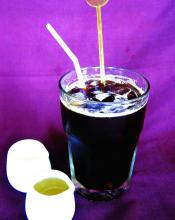Introduction to the taste of flavor manor in Costa Rican Saint Roman coffee producing area
In 1949 Figueres Ferrer handed over power to the elected leader of the National Union Party, O. Wulat Blanco.
In October 1951, headed by Figueres Ferrer, the National Liberation Party was established.
In the six general elections from 1953 to 1978, the National Liberation Party won four times. During its reign, the party emphasized state intervention in the economy, nationalization of some industries, increased import taxes to protect national industries, forced United fruit companies to increase income tax, strengthened relations with other Latin American countries and Western Europe, changed the situation of relying solely on the United States, joined the Central American Common Market in 1963, and established diplomatic relations with the Soviet Union and some Eastern European countries in the 1970s.
In 1978, the leader of the Unity Party, R. Carazo Odio was elected president. In order to ease domestic conflicts, he adopted measures such as tightening spending and increasing social welfare. at the same time, he proposed to restrict state capital and encourage foreign and private investment.
In February 1982, L.A., leader of the National Liberation Party. Munch Alvarez was elected president.
In February 2010, Chinchilla won the general election and became the first female president of Costa Rica.
Coffee is an important economic source of Costa Rica. It was introduced in 1808 and has been cultivated for 200 years. Costa Rica has 1x3 population input.
Newly developed villa sarchi species
Newly developed villa sarchi species
In the coffee-related industry, Colombians say that coffee has changed the country and enjoyed a rich environment, and coffee has indeed made an outstanding contribution. Although the land area of Colombia ranks third from the bottom of Central America, its economic environment is better than that of half of the countries. due to the affluence of the people, social stability, and spare capacity to care about environmental issues, there are more than 30 national parks in Colombia.
Coffee was introduced into Costa Rica from Cuba in 1729. Today, its coffee industry is one of the well-organized industries in the world, with a yield of 1700 kg per hectare. Costa Rica has only 3.5 million people but 400m coffee trees, and coffee exports account for 25 per cent of the country's total exports. Costa Rica's volcanic soil is very fertile and well drained, especially the central plateau CentralPlateau, where the soil includes successive layers of volcanic ash planted in Costa Rica are Arabica coffee trees, improved, the quality of coffee beans is better and more stable; in order to facilitate picking, coffee trees are maintained at a height of about 2 meters by continuous pruning. The coffee that people eat is the taste of the seeds in the fruit that are brewed in water. After picking raw coffee beans, the seeds (that is, coffee beans) can be roasted only by peeling, pulp, seed film and sun exposure. Part of the process can be replaced by machines, and the speed of coffee production increases a lot. However, there is no machine to do coffee picking. We must use manual work for a wide variety of coffee here, but its industrial policy is large and cheap, so there is not much excellent coffee. But it's a good choice for mixing other coffees.
One of the most famous is Mountain Costa Rica Coffee, which tastes mellow and neutral. It can be boiled directly or mixed with other kinds of coffee beans to form a mixed coffee. It is also a good choice.
Other kinds of Brazilian coffee, such as Rio and Parana, can be produced in large quantities because they do not require too much care. Although the taste is rough, it is a kind of high-quality and inexpensive coffee, which has its own standards because it is distributed all over the country and varies in quality (NO.2~NO.8 according to the number of sundries, NO.13~NO.19 according to the size of beans, and six grades according to taste). Almost all Arabica species are of good quality and stable in price. The most famous one is Costa Rica, which has been a necessity of blended coffee, familiar to the public and volcanic dust since ancient times. Costa Rica was therefore the first country in Central America to grow coffee and bananas for commercial value. Coffee and bananas are the country's main exports

Important Notice :
前街咖啡 FrontStreet Coffee has moved to new addredd:
FrontStreet Coffee Address: 315,Donghua East Road,GuangZhou
Tel:020 38364473
- Prev

Introduction of high-quality coffee with unique flavor in Guatemala Antigua coffee producing area
The capital, Guatemala City, is the largest city in Guatemala and the city of Central America. Map of Guatemala covers an area of 996 square kilometers with a population of 3.1 million (2010). Founded in 1524. Due to repeated damage by the earthquake, he moved to his present site in 1776. How low buildings are in the city. It has been the capital since 1779. It was the capital of the Central American Federation from 1823 to 1838. Coffee, corn
- Next

El Salvador Himalayan coffee varieties Production area Taste characteristics Fine coffee beans Introduction
In 1949 Figueres Ferrer handed over power to the elected leader of the National League, O. Urat Blanco. In October 1951, Figueres Ferrer led the establishment of the National Liberation Party. Of the six general elections held between 1953 and 1978, the National Liberation Party won four. During its rule, the party emphasized state intervention in the economy, nationalized some industries and raised import taxes to protect the nation.
Related
- Detailed explanation of Jadeite planting Land in Panamanian Jadeite Manor introduction to the grading system of Jadeite competitive bidding, Red bid, Green bid and Rose Summer
- Story of Coffee planting in Brenka region of Costa Rica Stonehenge Manor anaerobic heavy honey treatment of flavor mouth
- What's on the barrel of Blue Mountain Coffee beans?
- Can American coffee also pull flowers? How to use hot American style to pull out a good-looking pattern?
- Can you make a cold extract with coffee beans? What is the right proportion for cold-extracted coffee formula?
- Indonesian PWN Gold Mandrine Coffee Origin Features Flavor How to Chong? Mandolin coffee is American.
- A brief introduction to the flavor characteristics of Brazilian yellow bourbon coffee beans
- What is the effect of different water quality on the flavor of cold-extracted coffee? What kind of water is best for brewing coffee?
- Why do you think of Rose Summer whenever you mention Panamanian coffee?
- Introduction to the characteristics of authentic blue mountain coffee bean producing areas? What is the CIB Coffee Authority in Jamaica?

